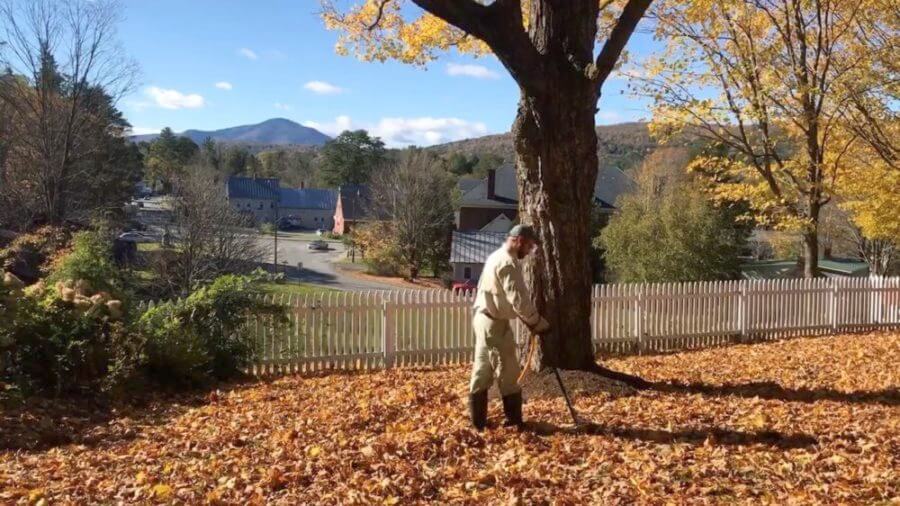This video shows Chippers’ Plant Health Care technician injecting a liquid fertilizer solution into the soil around several Sugar maples. Fall is a great time to apply fertilizer because this is when trees are accustomed to getting an influx of slow-release nutrients, which help the tree recover from the growing season and prepare for the future.
Lawns Can be Tough on Trees
Fallen leaves are nature’s fertilizer. In turf-dominated landscapes, most leaves and woody debris are cleaned up and removed, therefore trees don’t get the same nutrient cycling that occurs in a healthy forest soil. Turf is a serious competitor when it comes to water and nutrients, so this injection method is used to help apply the mixture directly to the root zone of the tree.
Types of Fertilizer
Depending on the time of year, the type of trees and specific soil conditions, different fertilizers and additives may be used to address different situations. One thing in common between all the soil injection mixes Chippers uses is the addition of humic substances. In simple terms, humic substances are a concentrated form of organic matter that prevents nutrient leaching and helps plant roots receive more water and nutrients. It’s all about building soil health and structure to naturally increase the health and vigor of your trees and plants.
Do Your Trees Need to be Fertilized?
If you notice that your trees and shrubs turn color early, have branch dieback, or have small or sickly leaves during the growing season, it’s a good indication that they are experiencing a nutrient deficiency and need some help. A fall fertilizer treatment will help them recover from the stress of the growing season and encourage new lush growth in the spring.
Volcano Mulching
The trees in the above video have too much mulch piled up around the root collar. Commonly known as a “mulch volcano” this is a mistake that many well-intentioned people make. Mulch above the root collar can cause bark death and decay, harbor damaging insects and disease and contribute to decline. It can also encourage the growth of girdling roots that encircle the main stem and cut off water and nutrient flow.
Proactive Plant Health Care Program
We tend to think that trees in our planted landscape can pretty much fend for themselves. But we have created an unnatural landscape that can be further compounded by poor site conditions, drought or overwatering, improper planting (and mulching!), by using non-native species and planting marginally healthy flora. Insect problems and diseases will take advantage of any opportunity. A proactive plant health care program mimics what should be happening naturally for a healthy and aesthetically pleasing landscape. Improving soil health and fertility is the best way to help your trees help themselves.


